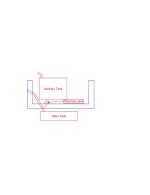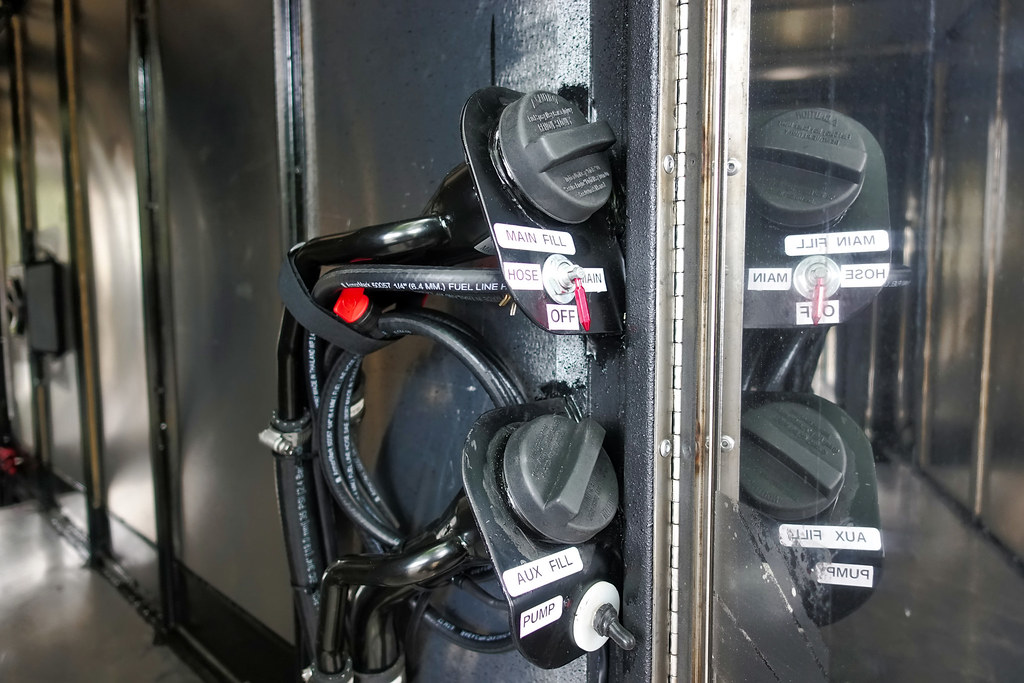So I have had this idea rolling around in my head for some time. Having some spare gas is a good idea, but I am not a fan of the RotoPax. Spending $150+ to carry an extra 2 gallons doesn’t rub my budget the right way. Jerry cans are a lot cheaper, but are still a bit awkward to strap down, find a place for, … So, I came up with this.
Bolt a 15 gallon tank into the bed of the truck. (10”d, 15”h, 23”l) Drain the fuel out the bottom to a solenoid valve. The other side of the solenoid valve goes to the fuel filler neck between the gas cap and the tank. When the main tank starts getting low, flip a switch, open the solenoid, and the fuel drains down into the main tank. You don’t have to get out of the truck. You don’t have to worry about spilling gas down the side of the truck trying to refuel. You don’t have to try and hold up a 5 gallon jerry can up with your bad shoulder.
When I fill up at the gas station now, I generally put between 16 and 18 gallons in. With a 15 gallon aux tank, if I wait till about that same point on the gas gauge, I can open the solenoid, and completely drain the aux tank without worry of the main over-filling. I picked making the connection in the fuel filler neck somewhere because I thought it might be a little easier to tap. And if I do screw something up while making the hole, the filler neck will be easier to replace than the whole tank.
Can someone tell me why this won’t work? I am a fan of the KISS theory of design (Keep It Simple, Stupid). This is about a simple as I can make it. Although the engineer in me has tried to make it much more complicated.

Bolt a 15 gallon tank into the bed of the truck. (10”d, 15”h, 23”l) Drain the fuel out the bottom to a solenoid valve. The other side of the solenoid valve goes to the fuel filler neck between the gas cap and the tank. When the main tank starts getting low, flip a switch, open the solenoid, and the fuel drains down into the main tank. You don’t have to get out of the truck. You don’t have to worry about spilling gas down the side of the truck trying to refuel. You don’t have to try and hold up a 5 gallon jerry can up with your bad shoulder.
When I fill up at the gas station now, I generally put between 16 and 18 gallons in. With a 15 gallon aux tank, if I wait till about that same point on the gas gauge, I can open the solenoid, and completely drain the aux tank without worry of the main over-filling. I picked making the connection in the fuel filler neck somewhere because I thought it might be a little easier to tap. And if I do screw something up while making the hole, the filler neck will be easier to replace than the whole tank.
Can someone tell me why this won’t work? I am a fan of the KISS theory of design (Keep It Simple, Stupid). This is about a simple as I can make it. Although the engineer in me has tried to make it much more complicated.





